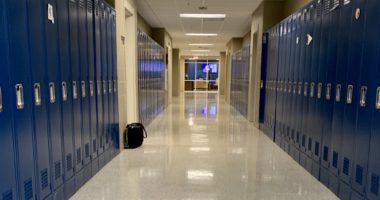7 Questions to Ask Your District Leader About Where ARP Funds Are Going
Many students are returning to school after long-term school building closures. As a result, many advocates and families are concerned about children’s physical health as well as their social, emotional, and academic well-being. These concerns are real, and it is important that districts create space to listen, engage, and respond to families and advocates in meaningful ways.
Some families have already made it clear that after over a year of school disruptions, they want their children to be offered supports like tutoring. After a year in which the country’s systemic racism was front and center, many Black and Latino families have concerns around schools being safe, inviting, anti-racist environments. Many families are also concerned about sending children who are too young to be vaccinated into school buildings. Fortunately, school districts across the country are receiving unprecedented amounts of funding from the federal government that can help them to proactively plan for and address the needs and concerns of students and their families. And some districts are doing just that. For example, Detroit is using these funds for weekly testing and upgrades to ventilation systems in old school buildings. Nashville plans to put these funds toward expanding tutoring and afterschool programs. Other districts plan to use federal dollars to hire school counselors, behavioral specialists, teachers, nurses, and tutors.
While many district and school leaders are making plans, they need to hear from families and advocates. Here are some questions you can ask:
1. How do you plan to spend federal relief dollars?
Tip: Use the unfinished learning briefs to see if the plan includes evidence-based strategies.
2. How do you plan to include families and communities in the process?
Tip: The federal government is requiring district and school leaders to engage the community. It is ok to remind them.
3. How does the school plan to focus on assets instead of deficits, ensure equity, and meet the needs of each child?
Tip: The answer should indicate how the school plans to meet the needs of specific groups.
4. What additional staff do you plan to hire to meet the social, emotional, and academic needs of the students in the building? What professional development will you provide to existing staff?
Tip: Increasing wrap-around services or hiring counselors and health professionals is an allowable use of ARP funds. Teachers’ social and emotional well-being is also important, so they should receive professional development and support.
5. How will you assess whether my child is on grade level after so many school disruptions?
Tip: Schools should do evaluations at the beginning of the school year and along the way to make sure students are making progress.
6. How will you ensure that learning is accelerated instead of remediated?
Tip: Research shows that students who experienced acceleration instead of remediation were more successful.
7. What is the school’s plan to ensure that students who are ready get enrolled in advanced courses?
Tip: Schools should have a process for evaluating when students are ready for advanced courses and where they may need additional support or opening enrollment for all students who are interested, and for communicating with students and families about enrollment opportunities and the benefits of taking advanced courses.


